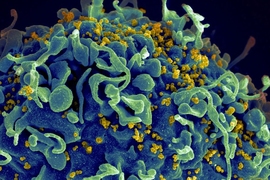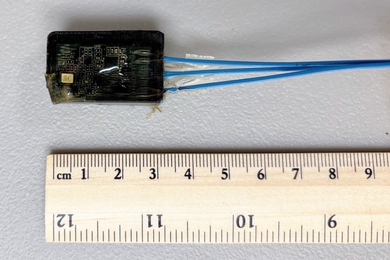Arup K. Chakraborty, the Robert T. Haslam Professor of Chemical Engineering and founding director of MIT’s Institute for Medical Engineering and Science (IMES), has been elected to the National Academy of Medicine (NAM) in recognition of his distinguished contributions to medicine and health.
Chakraborty, a professor of physics, chemistry, and biological engineering, was one of 70 new members and 10 international members announced recently at the annual meeting of the academy. Membership in the NAM is considered one of the highest honors in the fields of health and medicine and recognizes individuals who have demonstrated outstanding professional achievements and commitment to service.
“I am honored to be elected to the National Academy of Medicine,” Chakraborty says.
As of this year’s elections, there are only 21 individuals in the United States who have achieved the trifeca of being members of the National Academy of Medicine, the National Academy of Sciences, and the National Academy of Engineering. Chakraborty joins fellow IMES core faculty members Jim Collins and Emery Brown and associate IMES member Robert Langer in sharing the distinction of being the only four members of the MIT faculty with membership in all three branches of the U.S. National Academies. He was elected a member of the National Academy of Sciences and the National Academy of Engineering for completely different bodies of work.
In addition to being the founding director of IMES, Chakraborty is also a founding steering committee member of the Ragon Institute of MIT, MGH, and Harvard and an associate member of the Broad Institute of MIT and Harvard. His research is focused at the intersection of various disciplines, in particular bringing immunology together with approaches from the physical and engineering sciences. His interests span T cell signaling, T cell development and repertoire, and a mechanistic understanding of HIV evolution, antibody evolution, and vaccine design.
Chakraborty’s work has been recognized with numerous other honors, including the NIH Director’s Pioneer Award, the E.O. Lawrence Medal for Life Sciences from the U.S. Department of Energy, the Allan P. Colburn and Professional Progress awards from the AIChE, a Dreyfus Teacher-Scholar award, and a National Young Investigator award. He is a fellow of the American Academy of Arts and Sciences and the American Association for the Advancement of Science, and serves on the U.S. Defense Science Board. He has also received four teaching awards.
The National Academy of Medicine, established in 1970 as the Institute of Medicine, is an independent organization of eminent professionals from diverse fields including health and medicine; the natural, social, and behavioral sciences; and beyond. It serves alongside the National Academy of Sciences and the National Academy of Engineering as an adviser to the nation and the international community. Through its domestic and global initiatives, the NAM works to address critical issues in health, medicine, and related policy and inspire positive action across sectors. The NAM collaborates closely with its peer academies and other divisions within the national academies.










